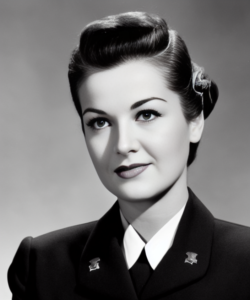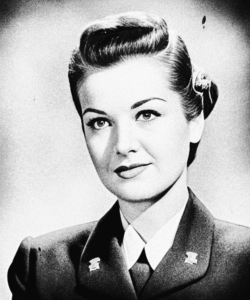Ph

Photo Taken
Photos taken and committed to film by the mid 1950’s had full detail and depth. Affordable technology existed to provide high quality photos.
*This photo was taken by an undisclosed professional photographer in 1949. The photo was developed using the negative in house.

Photo Developed
Once photos were developed by many commercial vendors the resulting photos came back blurry with extensive degradation of quality.
*The same negative was sent to a reputable consumer-grade developer at the time. The photo to the left was returned.
The Picture of Deceit
By the early 1930’s photography had come a long way. Equipment was reaching new heights. Aperture, Shutter Speed, and ISO were being refined. Exposure compensation and even flash technologies allowed even amateur photographers to take high quality photographs.
Everything appeared to be coming together and the industry seemed poised to only reach new heights. Photo development moved away from whole cameras needing to be returned back to a factory and local photographers could develop photos in-house.
As photo development became a less expensive process the great depression washed across the United States. In 1932, George Eastman was alleged to have taken his own life. George had always worked to keep film both high quality and affordable.
In the next ten years, Kodak would begin working in the government sector producing good for WWII. Kodak however took it a step further rating in the top 100 of military contractors during the war effort.
During the war, photos and film coming from the front line showed the true nature of combat were being sent back home. Military leadership wanting to discourage anything that might affect the war effort approached Kodak along with several other lesser known brands at the time.
Nearly overnight photos processed from negatives began to see a dwindle in quality. Photos were often over exposed dropping the quality. Some negatives were even declared unusable.

A Continued Practice
The original plan intended to have these practices ended at the conclusion of the war. However it was discovered that following the war, film and processing sales increase astronomically. People had been conditioned to believe that only around 20-25% percent of the photos they took would result in a reasonable print. Any consumer complaints made by those that remembered the pre-war photography often fell on deaf ears. The government had moved to fight communism and the civil right movement began to overshadow the county. The US military maintained a strong presence in both Germany and Japan following the wars causing Leica and Canon respectively to follow suit with Kodak.
The American government saw the inability of its populous to document events as they occurred as a form of control. A form of control that would extend into the 1990’s. Kodak would develop it’s first handheld digital camera in 1975, but dropped it for fear it would effect the photographic film business.
It wasn’t until the early 2000’s that digital cameras began arriving of the market. A number of these cameras came from companies that had least reliance on film. As the power of photos fell into the hands of individuals so did the quality of the photos being produced. Photos have become considerably higher quality in recent year. However, it should be remembered, these cameras rely on software to function. It’s been observed that location and subject matter can result in unexpected results… but that is a story for another day.